Cancer is a disease that develops when cells in your body divide at a faster rate than normal. These abnormal cells grow into a lump — or tumor. Cancer refers to any one of a large number of diseases characterized by the development of abnormal cells that divide uncontrollably and have the ability to infiltrate and destroy normal body tissue. Cancer often has the ability to spread throughout your body. Cancer is a leading cause of death worldwide. But survival rates are improving for many types of cancer, thanks to improvements in cancer screening and cancer treatment.
Symptoms
Signs and symptoms caused by cancer will vary depending on what part of the body is affected. Some general signs and symptoms associated with, but not specific to, cancer, include:
- Fatigue
- Lump or area of thickening that can be felt under the skin
- Weight changes, including unintended loss or gain
- Skin changes, such as yellowing, darkening or redness of the skin, sores that won’t heal, or changes to existing moles
- Changes in bowel or bladder habits
- Persistent cough or trouble breathing
- Difficulty swallowing
- Hoarseness
- Persistent indigestion or discomfort after eating
- Persistent, unexplained muscle or joint pain
- Persistent, unexplained fevers or night sweats
- Unexplained bleeding or bruising

Causes
Cancer is caused by changes (mutations) to the DNA within cells. The DNA inside a cell is packaged into a large number of individual genes, each of which contains a set of instructions telling the cell what functions to perform, as well as how to grow and divide. Errors in the instructions can cause the cell to stop its normal function and may allow a cell to become cancerous.
What do gene mutations do?
A gene mutation can instruct a healthy cell to:
- Allow rapid growth. A gene mutation can tell a cell to grow and divide more rapidly. This creates many new cells that all have that same mutation.
- Fail to stop uncontrolled cell growth. Normal cells know when to stop growing so that you have just the right number of each type of cell. Cancer cells lose the controls (tumor suppressor genes) that tell them when to stop growing. A mutation in a tumor suppressor gene allows cancer cells to continue growing and accumulating.
- Make mistakes when repairing DNA errors. DNA repair genes look for errors in a cell’s DNA and make corrections. A mutation in a DNA repair gene may mean that other errors aren’t corrected, leading cells to become cancerous.
These mutations are the most common ones found in cancer. But many other gene mutations can contribute to causing cancer.
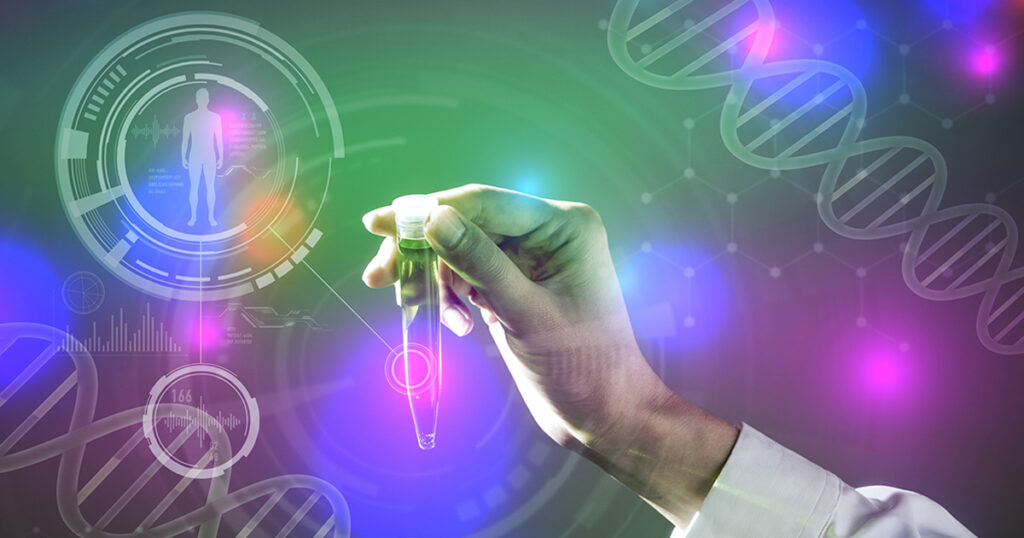
What causes gene mutations?
Gene mutations can occur for several reasons, for instance:
- Gene mutations you’re born with. You may be born with a genetic mutation that you inherited from your parents. This type of mutation accounts for a small percentage of cancers.
- Gene mutations that occur after birth. Most gene mutations occur after you’re born and aren’t inherited. A number of forces can cause gene mutations, such as smoking, radiation, viruses, cancer-causing chemicals (carcinogens), obesity, hormones, chronic inflammation and a lack of exercise.
Gene mutations occur frequently during normal cell growth. However, cells contain a mechanism that recognizes when a mistake occurs and repairs the mistake. Occasionally, a mistake is missed. This could cause a cell to become cancerous.
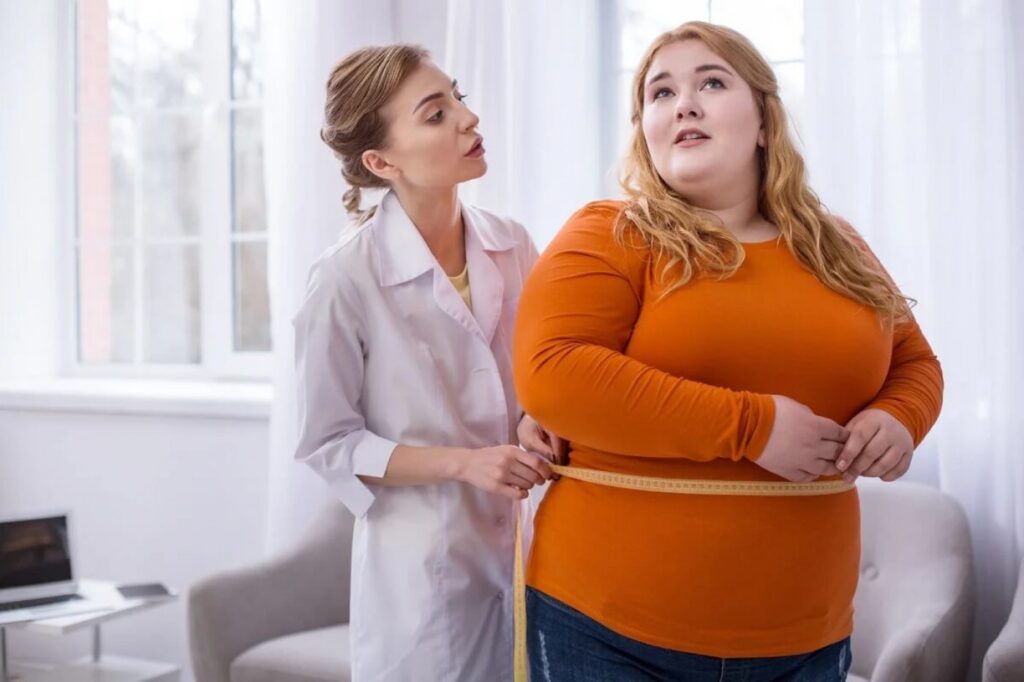
Cancer screening & diagnosis
Diagnosing cancer at its earliest stages often provides the best chance for a cure. With this in mind, talk with your doctor about what types of cancer screening may be appropriate for you. For a few cancers, studies show screening tests can save lives by diagnosing cancer early. For other cancers, screening tests are recommended only for people with increased risk. A variety of medical organizations and patient-advocacy groups have recommendations and guidelines for cancer screening. Review the various guidelines with your doctor and together you can determine what’s best for you based on your own risk factors for cancer.
Your doctor may use one or more approaches to diagnose cancer:
- Physical exam. Your doctor may feel areas of your body for lumps that may indicate a tumor. During a physical exam, he or she may look for abnormalities, such as changes in skin color or enlargement of an organ that may indicate the presence of cancer.
- Laboratory tests. Laboratory tests, such as urine and blood tests, may help your doctor identify abnormalities that can be caused by cancer. For instance, in people with leukemia, a common blood test called complete blood count may reveal an unusual number or type of white blood cells.
- Imaging tests. Imaging tests allow your doctor to examine your bones and internal organs in a noninvasive way. Imaging tests used in diagnosing cancer may include a computerized tomography (CT) scan, bone scan, magnetic resonance imaging (MRI), positron emission tomography (PET) scan, ultrasound and X-ray, among others.
- Biopsy. During a biopsy, your doctor collects a sample of cells for testing in the laboratory. There are several ways of collecting a sample. Which biopsy procedure is right for you depends on your type of cancer and its location. In most cases, a biopsy is the only way to definitively diagnose cancer. In the laboratory, doctors look at cell samples under the microscope. Normal cells look uniform, with similar sizes and orderly organization. Cancer cells look less orderly, with varying sizes and without apparent organization.
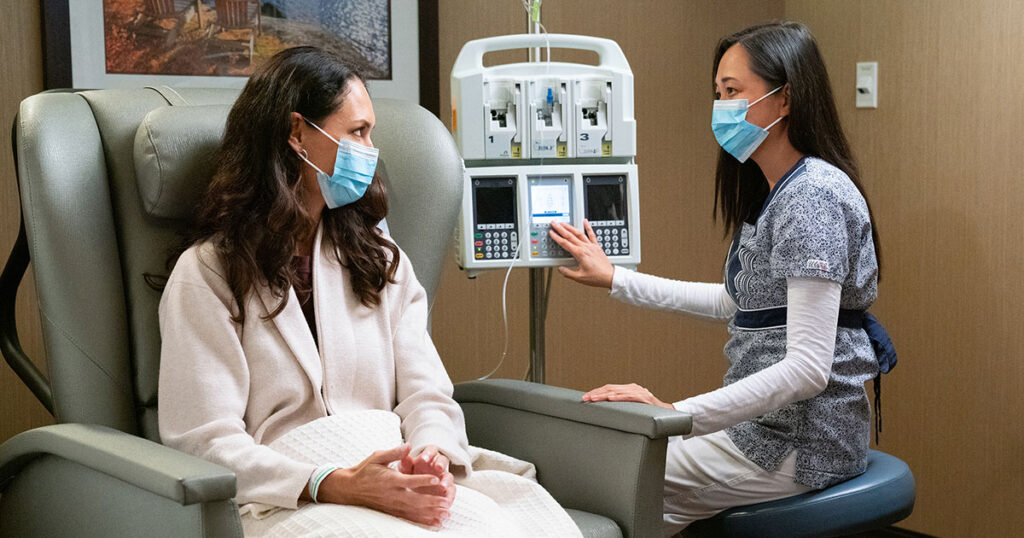
Cancer stages
Once cancer is diagnosed, your doctor will work to determine the extent (stage) of your cancer. Your doctor uses your cancer’s stage to determine your treatment options and your chances for a cure. Staging tests and procedures may include imaging tests, such as bone scans or X-rays, to see if cancer has spread to other parts of the body. Cancer stages are generally indicated by Roman numerals — I through IV, with higher numerals indicating more advanced cancer. In some cases, cancer stage is indicated using letters or words.
Prevention
There’s no certain way to prevent cancer. But doctors have identified several ways of reducing your cancer risk, such as:
- Stop smoking. If you smoke, quit. If you don’t smoke, don’t start. Smoking is linked to several types of cancer — not just lung cancer. Stopping now will reduce your risk of cancer in the future.

- Avoid excessive sun exposure. Harmful ultraviolet (UV) rays from the sun can increase your risk of skin cancer. Limit your sun exposure by staying in the shade, wearing protective clothing or applying sunscreen.
- Eat a healthy diet. Choose a diet rich in fruits and vegetables. Select whole grains and lean proteins.
- Exercise most days of the week. Regular exercise is linked to a lower risk of cancer. Aim for at least 30 minutes of exercise most days of the week. If you haven’t been exercising regularly, start out slowly and work your way up to 30 minutes or longer.
- Maintain a healthy weight. Being overweight or obese may increase your risk of cancer. Work to achieve and maintain a healthy weight through a combination of a healthy diet and regular exercise.
- Drink alcohol in moderation, if you choose to drink. If you choose to drink alcohol, limit yourself to one drink a day if you’re a woman of any age or a man older than age 65, or two drinks a day if you’re a man 65 years old or younger.
- Schedule cancer screening exams. Talk to your doctor about what types of cancer screening exams are best for you based on your risk factors.
- Ask your doctor about immunizations. Certain viruses increase your risk of cancer. Immunizations may help prevent those viruses, including hepatitis B, which increases the risk of liver cancer, and human papillomavirus (HPV), which increases the risk of cervical cancer and other cancers. Ask your doctor whether immunization against these viruses is appropriate for you.
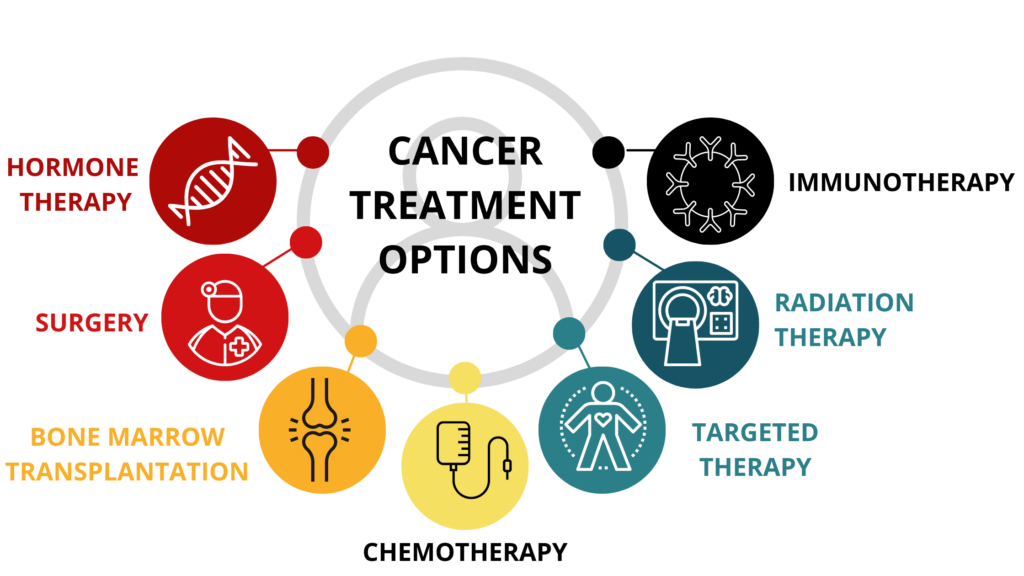
Role of exercises
Surviving cancer and making it through cancer treatment are major accomplishments. Most, if not all, survivors find a new priority in life: keeping cancer from returning. The latest research suggests that exercise for cancer patients may help. If you’ve made it through the rough road of cancer diagnosis and treatment, you’re probably thinking about what you can do to stay healthy. But just what is the best way to get fit, and maximize your long-term health?
Exercise for cancer patients
There’s abundant evidence that exercise and eating right can help prevent people from getting cancer. The latest information shows that exercise for cancer patients can also keep cancer from recurring. Several recent studies suggest that higher levels of physical activity are associated with a reduced risk of the cancer coming back, and a longer survival after a cancer diagnosis. In studies of several different cancers, being overweight after completing treatment was associated with shorter survival times and higher risk of cancer recurrence. Women who exercise after completing breast cancer treatment live longer and have less recurrence, according to recent evidence. Colorectal cancer survivors who exercised lived longer than those who didn’t, two recent clinical trials showed. Clearly, any cancer survivor wants to do all they can to prevent cancer recurrence. Surely some of their goals for healthy living should be around weight control and exercise. As a cancer survivor, exercising could help you live a longer life — free from cancer.
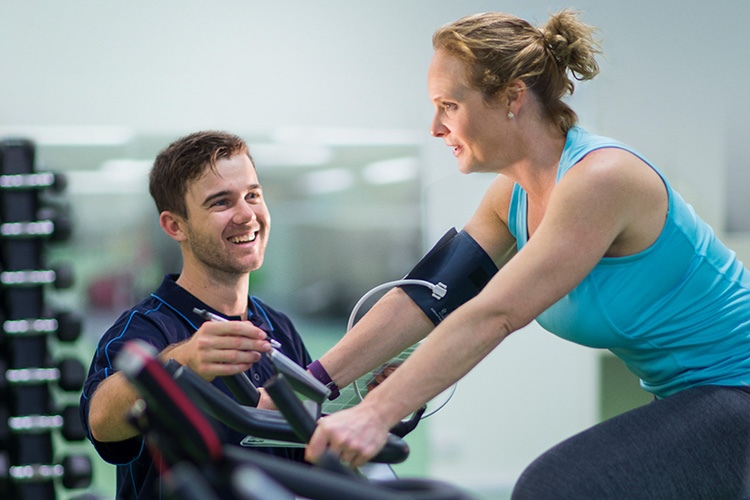
Exercise can help cancer patients maximize health for the long term. Here’s how to get started. The benefits of exercise for the general population are well-publicized. But what if you’re a cancer patient? Exercise has many of the same benefits for cancer survivors as it does for other adults. Some of these benefits include an increased level of fitness, greater muscle strength, leaner body mass, and less weight gain. In other words, exercise for cancer patients can make you fitter, stronger, and thinner — like anyone else who exercises. Exercise can also:
- Improve mood.
- Boost self-confidence.
- Reduce fatigue.
- Lower your risk of cardiovascular disease and diabetes.
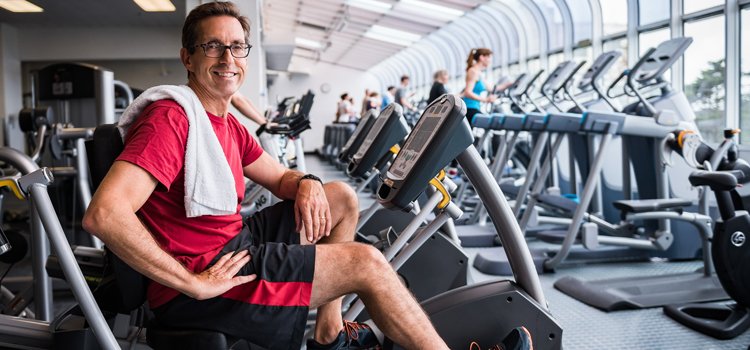
When to start
When should you start exercising after cancer diagnosis and treatment? As soon as possible. Studies show that after a cancer diagnosis, people slow down. Stress, depression, and feeling sick or fatigued from cancer or its treatment all tend to make people less active. The problem is, most people stay sedentary after treatment. As a long-term solution to the problem of fatigue, taking it easy and avoiding activity is not a good solution. It is important for cancer survivors to get back to exercising to help their recovery. In other words: if you’ve down-shifted your activity level since your cancer diagnosis, now is the time to rev back up.
What to do
Every person’s situation is different. Before starting a moderate to vigorous exercise program, see your doctor. The following types of exercise can help cancer patients – and everyone else – get back in shape:
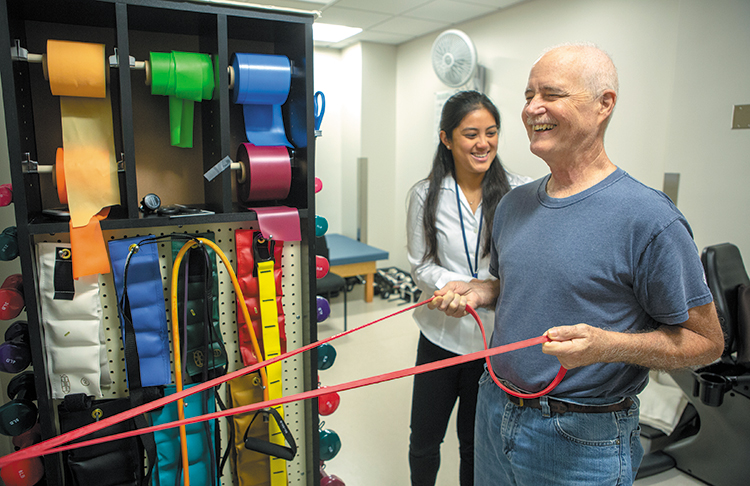
- Resistance training. Lifting weights or isometric exercise, which builds muscle. Many people lose muscle, but gain fat, through cancer treatment. For those with a high fat-to-lean mass ratio, resistance training can be especially helpful. Ideally, cancer survivors should do aerobic exercises and weight training. Both types of exercise are critical to the overall health and well-being of cancer survivors.
- Cardio exercises. Aerobic exercise, such as brisk walking, jogging, and swimming. This kind of exercise burns calories and helps you lose weight. Aerobic exercise also builds cardiovascular fitness, which lowers the risk of heart attack, stroke, and diabetes.
- Flexibility exercises (stretching & yoga). Virtually everyone can do flexibility exercises. Stretching is important to keep moving and to maintain mobility. If you’re not yet ready for more vigorous exercise, you should at least stay flexible.
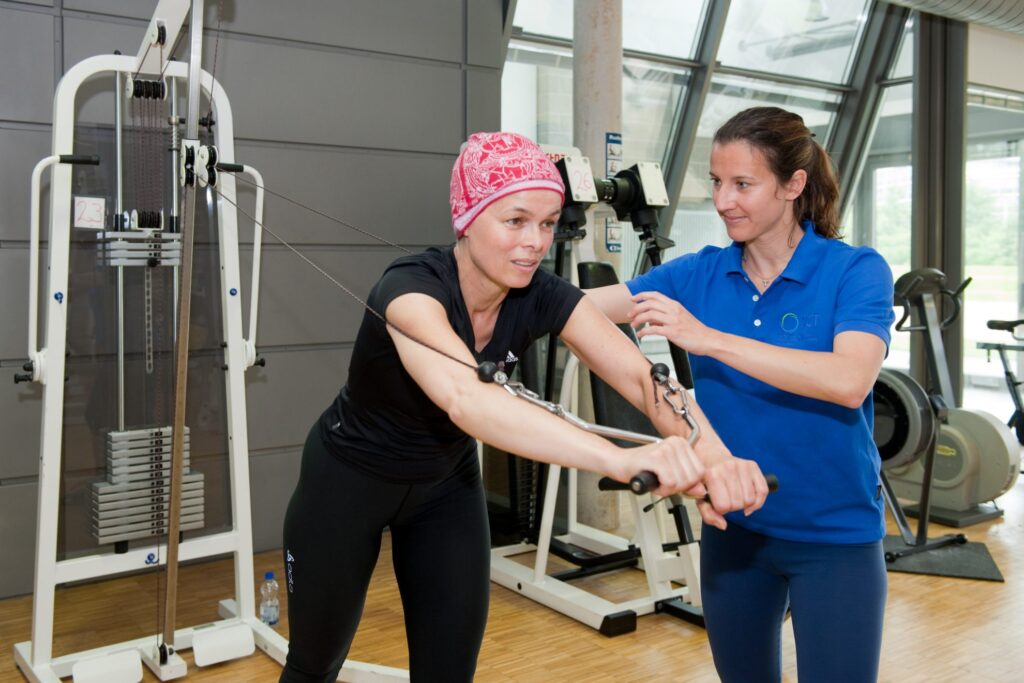
- Balance exercises. Balance exercises will help them regain function and mobility for activities of daily living and can counter some of the effects of muscle imbalances and body asymmetry after surgery. Balance training will help decrease the likeliness of falling. After a fall, activities are sometimes limited, which can make it difficult to live independently. Cancer survivors are sometimes at higher risk for osteoporosis due to cancer medications. When someone is nervous about falling, they might withdraw from their daily activities and have a lower quality of life.
- Breathing Exercises. Many people with lung cancer experience shortness of breath and have difficulty breathing, which can keep them from being active. That’s why it can help to start your exercise program with breathing exercises. Restoring breathing can help improve endurance, making it easier to accomplish daily activities.

How much and how hard?
For the general population, at least 30 to 60 minutes of moderate to vigorous physical activity at least 5 days a week. This amount of exercise is proven to reduce the risk of cancer, cardiovascular, and diabetes. The key is to set small, achievable goals and build on your successes. Try to find an activity you enjoy. You may want to buddy up with someone at the same fitness level. Having a friend to work out with will increase your motivation. Whatever you do, don’t get discouraged. Doing anything is better than doing nothing. Start slowly and build your body’s energy over time. Your body has been through a lot and it is necessary to challenge it gradually. You can increase your physical activity without joining a gym, or even leaving the house. Just building more activity into your daily routine can get you started. Here are a few suggestions:
- Take the stairs instead of riding the elevator.
- Buy a pedometer (step counter) and increase your number of steps daily.
- Take frequent breaks throughout the day to stand, stretch, and take short walks.
- Check the pantry. Lifting cans, detergent bottles, or anything heavy will build muscle. Do three sets of 10 lifts, or until you feel your muscles tiring.
Sometimes fatigue can be so severe that it is good to rest” temporarily. Rest for a while, start again slowly and build up. Your energy level will increase, over the long term.
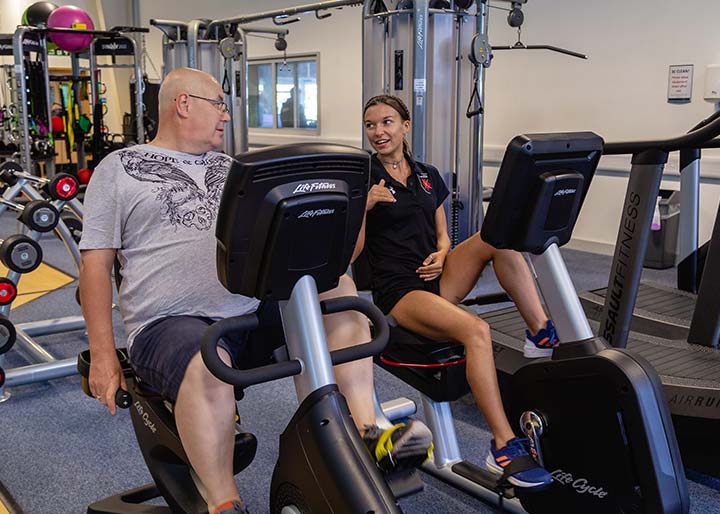
What to watch out for
The risks for cancer survivors are not too different from the general population. Musculoskeletal injuries–soreness, strains and sprains-are the most common. Exercise for cancer patients may carry a slightly higher risk for heart problems. It is always a good idea to have a complete physical exam and get approval from your oncologists before starting a moderate-to-vigorous exercise program.
If you have cancer affecting your bones, you might be more at risk of a break or fracture. You must avoid putting too much strain on the affected bones. You could try swimming or exercising in water. The water supports your body weight, so the skeleton isn’t stressed. Exercise such as yoga generally appears safe for everyone. People with low immunity due to treatment should try to avoid exercising in public gyms.
Cancer survivors may need to exercise less intensely and increase their workout at a slower rate than people who haven’t had cancer. Remember, the goal is to keep up as much activity as possible. Keep it safe, keep it fun, and make it work for you. Get together with your doctor, get an exercise program, and get moving!

Dr Saranjeet Singh
Fitness & Sports Medicine Specialist
Lucknow (UP), INDIA







